Hyundai i10 vs Mazda CX-5 – Which model is better for everyday use?
Both models have their strengths – but which one suits you more?
Compare performance, efficiency, price and space directly: Hyundai i10 or Mazda CX-5?
Costs and Efficiency:
Price and efficiency are key factors when choosing a car – and this is often where the real differences emerge.
Hyundai i10 has a decisively advantage in terms of price – it starts at 14600 £, while the Mazda CX-5 costs 30000 £. That’s a price difference of around 15438 £.
Fuel consumption also shows a difference: Hyundai i10 manages with 4.90 L and is therefore decisively more efficient than the Mazda CX-5 with 7 L. The difference is about 2.10 L per 100 km.
Engine and Performance:
Power, torque and acceleration say a lot about how a car feels on the road. This is where you see which model delivers more driving dynamics.
When it comes to engine power, the Mazda CX-5 has a evident edge – offering 141 HP compared to 90 HP. That’s roughly 51 HP more horsepower.
In acceleration from 0 to 100 km/h, the Mazda CX-5 is minimal quicker – completing the sprint in 10.50 s, while the Hyundai i10 takes 11.40 s. That’s about 0.90 s faster.
In terms of top speed, the Mazda CX-5 performs slightly better – reaching 195 km/h, while the Hyundai i10 tops out at 175 km/h. The difference is around 20 km/h.
There’s also a difference in torque: Mazda CX-5 pulls distinct stronger with 238 Nm compared to 172 Nm. That’s about 66 Nm difference.
Space and Everyday Use:
Beyond pure performance, interior space and usability matter most in daily life. This is where you see which car is more practical and versatile.
Both vehicles offer seating for 5 people.
In curb weight, Hyundai i10 is convincingly lighter – 996 kg compared to 1629 kg. The difference is around 633 kg.
In terms of boot space, the Mazda CX-5 offers convincingly more room – 583 L compared to 252 L. That’s a difference of about 331 L.
In maximum load capacity, the Mazda CX-5 performs significantly better – up to 2019 L, which is about 969 L more than the Hyundai i10.
Who comes out on top?
Overall, the Mazda CX-5 shows itself to be leads convincingly overall and secures the title of DriveDuel Champion.
It convinces with the more balanced overall package and proves to be the more versatile choice for everyday use.

Mazda CX-5
Hyundai i10
The Hyundai i10 impresses with its compact design, making it an ideal choice for navigating through busy urban environments. Its interior is surprisingly spacious, offering drivers and passengers comfort beyond what one might expect from a city car. The model combines efficiency and practicality, making it an attractive option for those seeking both economy and functionality in their daily commute.
details @ hyundai.news
@ hyundai.news
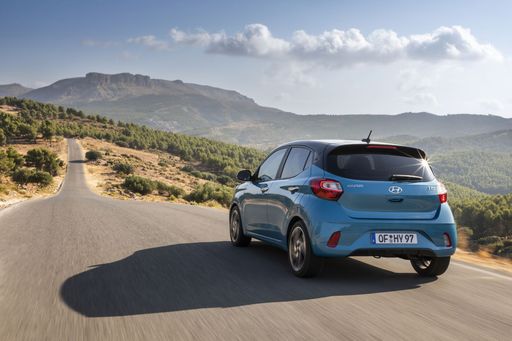 @ hyundai.news
@ hyundai.news
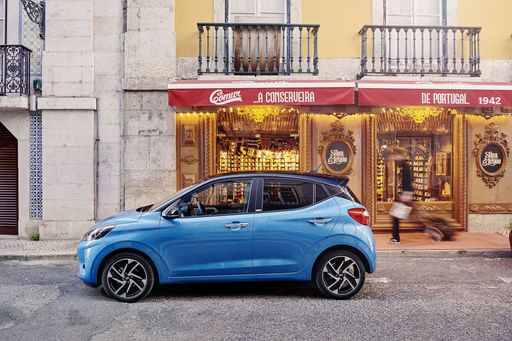 @ hyundai.news
@ hyundai.news
 @ hyundai.news
@ hyundai.news
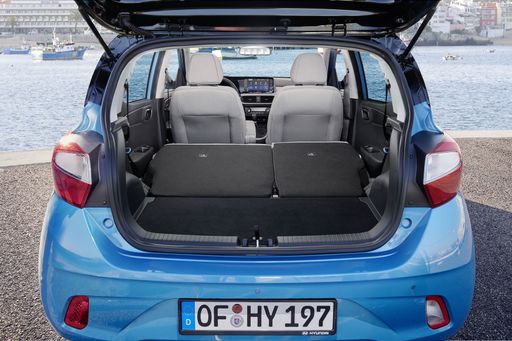 @ hyundai.news
@ hyundai.news
Mazda CX-5
The Mazda CX-5 exemplifies the perfect blend of style and practicality, offering a sleek design that turns heads while providing ample space for passengers and luggage. Its refined interior boasts high-quality materials and a user-friendly interface, making every journey a comfortable experience. With its engaging driving dynamics, the CX-5 delivers both performance and efficiency, appealing to drivers who crave excitement and reliability.
details @ de.mazda-press.com
@ de.mazda-press.com
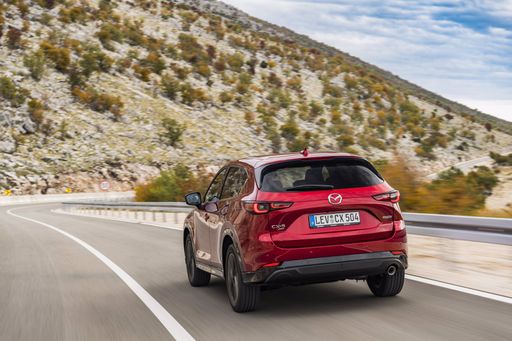 @ de.mazda-press.com
@ de.mazda-press.com
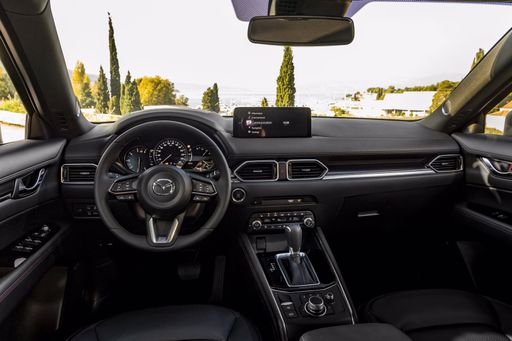 @ de.mazda-press.com
@ de.mazda-press.com

|

|
|
|
|
Costs and Consumption |
|
|---|---|
|
Price
14600 - 19000 £
|
Price
30000 £
|
|
Consumption L/100km
4.9 - 5.5 L
|
Consumption L/100km
7 L
|
|
Consumption kWh/100km
-
|
Consumption kWh/100km
-
|
|
Electric Range
-
|
Electric Range
-
|
|
Battery Capacity
-
|
Battery Capacity
-
|
|
co2
110 - 124 g/km
|
co2
157 g/km
|
|
Fuel tank capacity
36 L
|
Fuel tank capacity
56 L
|
Dimensions and Body |
|
|---|---|
|
Body Type
Hatchback
|
Body Type
SUV
|
|
Seats
4 - 5
|
Seats
5
|
|
Doors
5
|
Doors
5
|
|
Curb weight
996 - 1099 kg
|
Curb weight
1629 kg
|
|
Trunk capacity
252 L
|
Trunk capacity
583 L
|
|
Length
3670 - 3675 mm
|
Length
4690 mm
|
|
Width
1680 mm
|
Width
1860 mm
|
|
Height
1480 - 1483 mm
|
Height
1695 mm
|
|
Max trunk capacity
1050 L
|
Max trunk capacity
2019 L
|
|
Payload
344 - 423 kg
|
Payload
-
|
Engine and Performance |
|
|---|---|
|
Engine Type
Petrol
|
Engine Type
Petrol MHEV
|
|
Transmission
Manuel, Automatic
|
Transmission
Automatic
|
|
Transmission Detail
Manual Gearbox, Automated Manual
|
Transmission Detail
Automatic Gearbox
|
|
Drive Type
Front-Wheel Drive
|
Drive Type
Front-Wheel Drive
|
|
Power HP
63 - 90 HP
|
Power HP
141 HP
|
|
Acceleration 0-100km/h
11.4 - 18.4 s
|
Acceleration 0-100km/h
10.50 s
|
|
Max Speed
143 - 175 km/h
|
Max Speed
195 km/h
|
|
Torque
93 - 172 Nm
|
Torque
238 Nm
|
|
Number of Cylinders
3 - 4
|
Number of Cylinders
4
|
|
Power kW
46 - 66 kW
|
Power kW
104 kW
|
|
Engine capacity
998 - 1197 cm3
|
Engine capacity
2488 cm3
|
General |
|
|---|---|
|
Model Year
2024
|
Model Year
2025
|
|
CO2 Efficiency Class
C, D
|
CO2 Efficiency Class
F
|
|
Brand
Hyundai
|
Brand
Mazda
|
Is the Hyundai i10 offered with different drivetrains?
The Hyundai i10 is offered with Front-Wheel Drive.
The prices and data displayed are estimates based on German list prices and may vary by country. This information is not legally binding.
